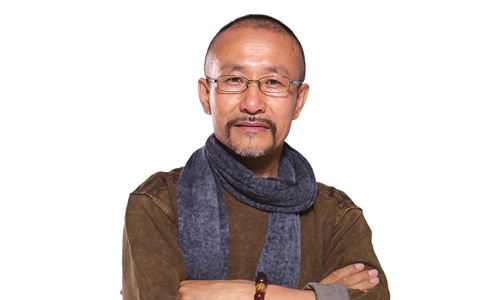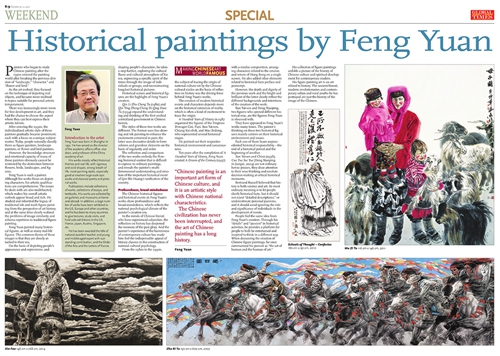SOURCE / PRESS RELEASE
Wang Xijing’s revival of Chinese Ink Painting
Wang Xijing is a famous painter specializing in realist portraits. Wang had an important turning point in 2000, transferring toward contemporary figure painting. The year also marked a revival of ink and wash painting.
Wang was born in Xi'an, an ancient cultural capital of 13 dynasties, and the origin of Chinese ink and wash art in the middle of the Tang Dynasty (618-907).
The ink and wash painting is a source of national dignity and has a place in the globalization of Chinese art, which represents Wang's greatest artistic pursuit and life dream.
From Wang's perspective, people cannot be limited to an artistic language of a nation; it requires rejuvenation of the shape as well as the brush and ink style of Chinese figure painting for the development of the Chinese figure painting.
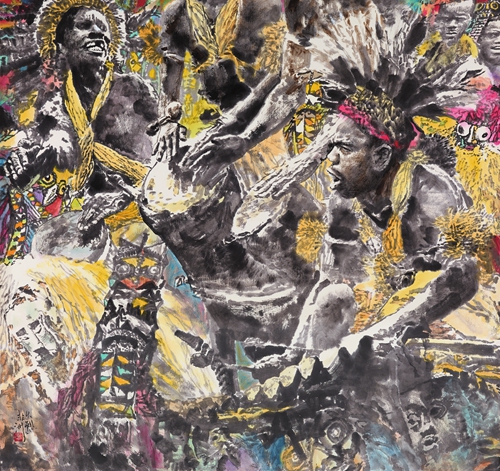
So, we should abandon the narrow view of national art, and create the object globalization.
In the aspect of artistic shapes, based on the ontological spirit of Chinese painting, he tried to realize the integration of oil painting cultural concepts and aesthetic consciousness.
The development of this kind of thinking is actually to create works with the potential to tap into an international artistic language with Chinese spirit and Chinese style of plastic art and pen and ink language, in order to win and achieve the opportunity and possibility of Chinese contemporary figure painting on the world art stage.
Around 2016, Wang created a number of works. Between freehand and realistic brushwork, he pays more attention to the extension and shape of the inner beauty of the brush and ink in figure painting.
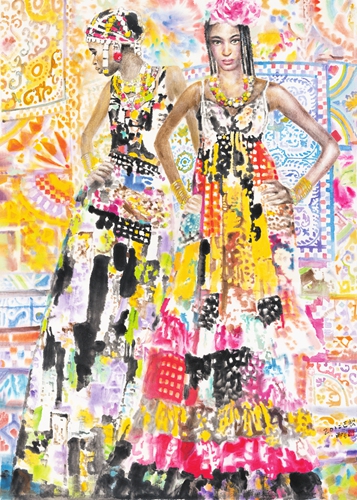
Intervening and shaping the artistic language belonging to the world with the spirit of Chinese brush and ink, but without losing the artistic shape and language standpoint belonging to the nation, is a bold attempt to win more cultural recognition in art. It is also an artistic dream that Chinese artists have been exploring and pursuing for nearly 100 years.
In 2018, at the Le Salon d'Automne in France, Wang won the "French Autumn Art Salon Lifetime Membership Achievement Award," "Sino-French Outstanding Cultural Ambassador Contribution Award" and the "Order of Honorary Citizen of Paris, France."
This event proves that the efforts made by Chinese artists in this field are being recognized and praised by a global audience.
This is the artistic thinking brought by Wang, based on global contemporary art vision, to create figure paintings with Chinese contemporary figure painting paradigms and the brush-and-ink style.
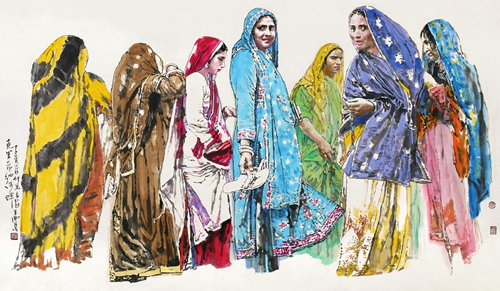
Wang, based on his profound skills and exquisite artistic accomplishments, uses the freehand color of Chinese brush and ink and realistic modeling ability of both the East and the West to break the relationship between Chinese and Western painting to form color and ink blocks.
The figure painting is formed by color blocks and ink blocks.
It is a material brush and ink compostion that expresses the sense of volume and weight of the art object, so that the original freehand ink has the dual context of Western homogeneous realistic painting and sculpting. This completes the two cultures of the East and the West.

In the works of "Dhaka Girl," "Tajik Bride," "Han Mei Te People" and "Mother and Son in the Sun," the facial expression of the characters has the texture effect and special taste of oil painting, which is homogeneous and interesting.
In the expression of headwear and clothing, the oriental linear colors form a freehand style. In terms of the color difference and proportion of color, the brush and ink make people feel the subjective expression of color such as impressionism.
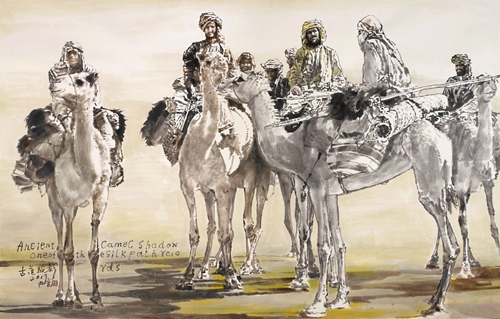
Wang's art, especially the two-way balance and fusion of paintings created over the past two decades, has enabled Chinese ink painting to achieve undifferentiated artistic propositions and aesthetic expressions beyond national and cultural boundaries.
In other words, Chinese painting has achieved the artistic effect of the same quality as that of oil painting.

Wang's efforts and exploration of artistic thinking have completed a worldwide practice of the revival of Chinese ink painting. His vision and proposition are broad, and he has a distinct value and global significance in the current ink art.
Introduction to the artist
Wang Xijing was born in August 1946 in Xi'an, Shaanxi Province. He is the vice president of Chinese Painting Society, vice chairman of Shaanxi Federation of Literary and Art Circles, honorary chairman of Shaanxi Artists Association, president of Shaanxi Chinese Painting Society, and honorary dean and professor of Academy of Arts of Xi'an University of Architecture and Technology. He was also a member of the 12th National Committee of the CPPCC and deputy to the ninth and 10th National People's Congress.
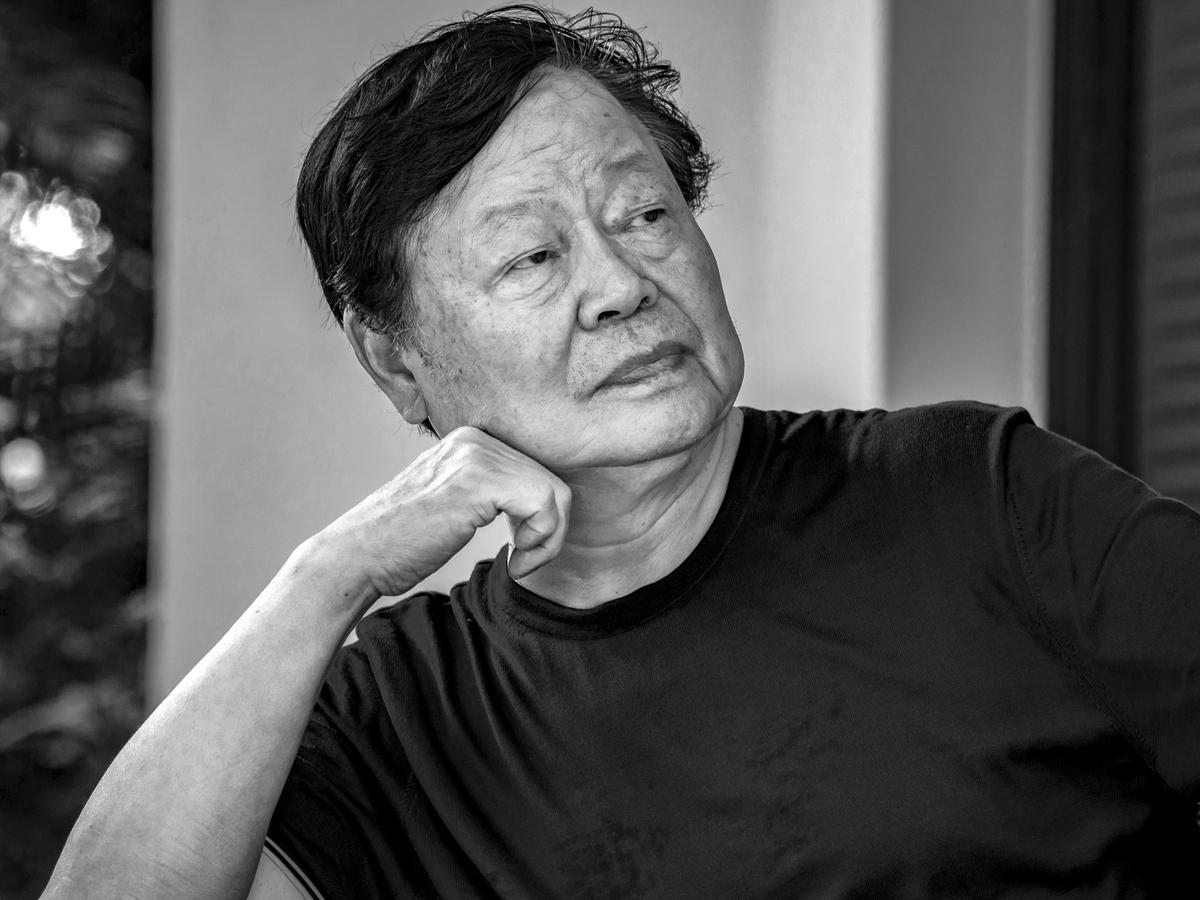
Wang was born in Xi'an, an ancient cultural capital of 13 dynasties, and the origin of Chinese ink and wash art in the middle of the Tang Dynasty (618-907).
The ink and wash painting is a source of national dignity and has a place in the globalization of Chinese art, which represents Wang's greatest artistic pursuit and life dream.
From Wang's perspective, people cannot be limited to an artistic language of a nation; it requires rejuvenation of the shape as well as the brush and ink style of Chinese figure painting for the development of the Chinese figure painting.

Huo Lie Fei Zhou 193 cm x 207 cm 2020
It is necessary not only to be good at absorbing artistic practice and pen and ink creation, but also to be deeply aware of the changes in the global art context in the development process.So, we should abandon the narrow view of national art, and create the object globalization.
In the aspect of artistic shapes, based on the ontological spirit of Chinese painting, he tried to realize the integration of oil painting cultural concepts and aesthetic consciousness.
The development of this kind of thinking is actually to create works with the potential to tap into an international artistic language with Chinese spirit and Chinese style of plastic art and pen and ink language, in order to win and achieve the opportunity and possibility of Chinese contemporary figure painting on the world art stage.
Around 2016, Wang created a number of works. Between freehand and realistic brushwork, he pays more attention to the extension and shape of the inner beauty of the brush and ink in figure painting.

Meng Ba Li 181 cm x 131 cm 2021
When freehand brushwork is involved in realistic modeling, it is no longer entangled with the boundaries and distinctions of Chinese and Western arts, but subtly maximizes the realistic modeling ability while serving realism.Intervening and shaping the artistic language belonging to the world with the spirit of Chinese brush and ink, but without losing the artistic shape and language standpoint belonging to the nation, is a bold attempt to win more cultural recognition in art. It is also an artistic dream that Chinese artists have been exploring and pursuing for nearly 100 years.
In 2018, at the Le Salon d'Automne in France, Wang won the "French Autumn Art Salon Lifetime Membership Achievement Award," "Sino-French Outstanding Cultural Ambassador Contribution Award" and the "Order of Honorary Citizen of Paris, France."
This event proves that the efforts made by Chinese artists in this field are being recognized and praised by a global audience.
This is the artistic thinking brought by Wang, based on global contemporary art vision, to create figure paintings with Chinese contemporary figure painting paradigms and the brush-and-ink style.

Ke Li Xi Na He Pan 249 cm x 144 cm 2019
It is also where he pays attention to the community of a shared future for mankind, opens up the artistic boundaries between the East and the West, and realizes the oriental feelings of the culture of his country.Wang, based on his profound skills and exquisite artistic accomplishments, uses the freehand color of Chinese brush and ink and realistic modeling ability of both the East and the West to break the relationship between Chinese and Western painting to form color and ink blocks.
The figure painting is formed by color blocks and ink blocks.
It is a material brush and ink compostion that expresses the sense of volume and weight of the art object, so that the original freehand ink has the dual context of Western homogeneous realistic painting and sculpting. This completes the two cultures of the East and the West.

Han Mei Te Ren 140 cm x 101 cm 2020
The artistic replacement of realism and freehand brushwork in the system has formed an integrated painting appeal within a bilingual system, which has the exploration value and construction significance of contemporary ink painting. This artistic expression is easy to see in his series of paintings focusing on African tribal people and important figures. In the work the "East African Chief," layers of superposition and layers of ink are both masterfully executed, aiming at protruding the skeletal muscles of the head and face with realism. The sketches of the characters' eyes and inner world are extremely "realistic."In the works of "Dhaka Girl," "Tajik Bride," "Han Mei Te People" and "Mother and Son in the Sun," the facial expression of the characters has the texture effect and special taste of oil painting, which is homogeneous and interesting.
In the expression of headwear and clothing, the oriental linear colors form a freehand style. In terms of the color difference and proportion of color, the brush and ink make people feel the subjective expression of color such as impressionism.

Gu Dao Tuo Ying 225 cm x 144 cm 2019
The expression of light and shadow on the faces of the characters follows the classic aesthetics of Western painting. And the image formation of accumulated color and ink perfectly achieves the same artistic effect as oil painting.Wang's art, especially the two-way balance and fusion of paintings created over the past two decades, has enabled Chinese ink painting to achieve undifferentiated artistic propositions and aesthetic expressions beyond national and cultural boundaries.
In other words, Chinese painting has achieved the artistic effect of the same quality as that of oil painting.

Yuan Shan 145 cm x 219 cm 2020
From the transformation of cultural concepts and consciousness, the works created by Wang also reflect the charm of Chinese contemporary ink painting in the world of art.Wang's efforts and exploration of artistic thinking have completed a worldwide practice of the revival of Chinese ink painting. His vision and proposition are broad, and he has a distinct value and global significance in the current ink art.
Introduction to the artist
Wang Xijing was born in August 1946 in Xi'an, Shaanxi Province. He is the vice president of Chinese Painting Society, vice chairman of Shaanxi Federation of Literary and Art Circles, honorary chairman of Shaanxi Artists Association, president of Shaanxi Chinese Painting Society, and honorary dean and professor of Academy of Arts of Xi'an University of Architecture and Technology. He was also a member of the 12th National Committee of the CPPCC and deputy to the ninth and 10th National People's Congress.

Wang Xijing
The author is Nan Yangzi, an art critic and curator.